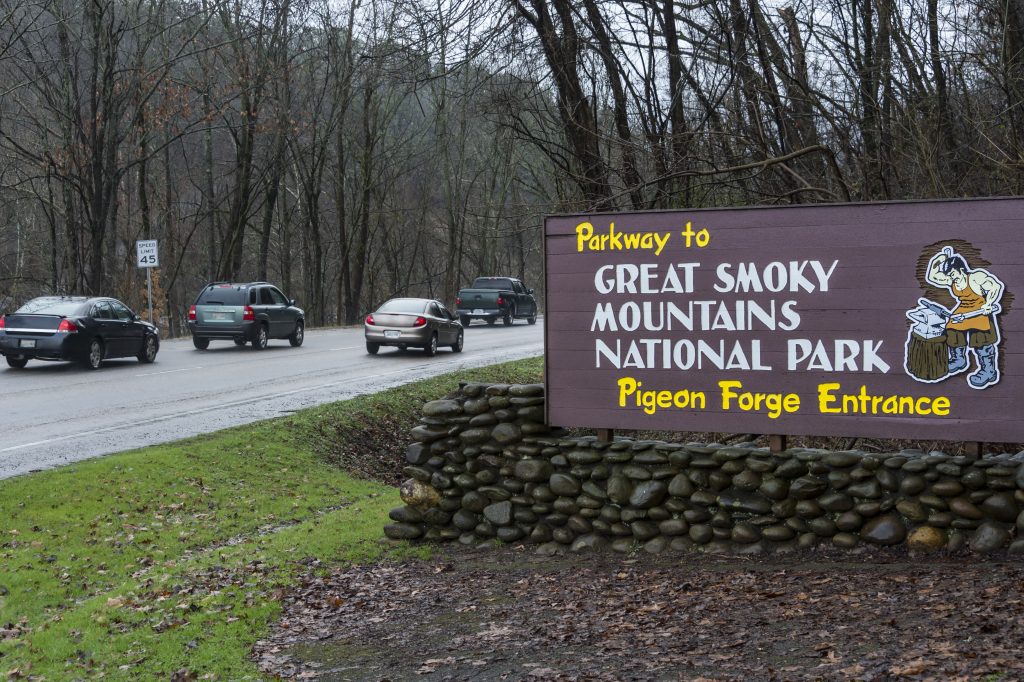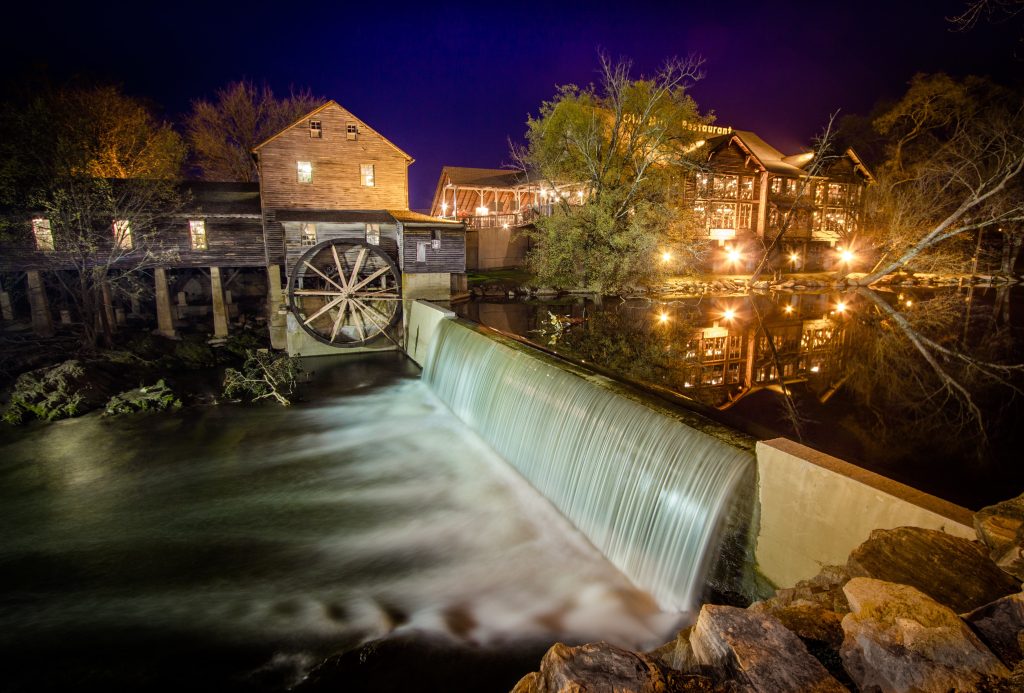Pigeon Forge pushed through to find its place on the map
In 1783, Colonel Samuel Wear served under John Sevier in the Battle of Kings Mountain during the Revolutionary War. He later settled his family in an area of the North Carolina territory bounded by two streams—one now known as Walden’s Creek and the other as the West Prong of the Little Pigeon River. Wear, as the county clerk for the failed effort to create the State of Franklin, became a constitutional convention delegate in 1795 in a second effort at statehood. In a meeting at Wear’s Fort, he and three other delegates authored what became the 1796 Tennessee Constitution. Sevier, of course, was named the first governor of our state and, in 1796, the Wear family officially became a part of Sevier County, Tennessee.
In this early era, the passenger pigeon had become the most abundant bird in North America, numbering between three to five billion. During their migration to the south, these birds would darken the sky, often stopping in the river valley near the Wear lands. Their prominence in the bird population and their importance as a food source warranted naming opportunities—the West, Middle, and East prongs of the Little Pigeon River cover much of the county. Hunted on a massive scale as game birds and plagued by the deforestation of their breeding grounds, the species drastically declined in numbers after the Civil War until the very last survivor, a female named Martha, died at the Cincinnati Zoo in 1914. Meanwhile, beginning as early as 1820, iron ore banks were discovered in the area not far from the Wear property. Because iron was in such short supply, Isaac Love built a forge along the West Prong to convert the ore into iron and help meet the local demand. Naturally, the community became known as Pigeon Forge.

Roll the clock forward into the 20th century as this lovely valley became the most popular route to Gatlinburg and the Great Smoky Mountains National Park. By the 1950s, the Green Valley Restaurant, Trotter’s, and the Apple Tree Inn were popular family-style eating places for summer vacationers and Knoxville area day-trippers. While primarily a residential community, the community began to welcome and accommodate its visitors. The historic Old Mill, Butler’s Store, and later the Pigeon Forge Pottery had locations on the West Prong. The Pigeon River Court, McAfee Court, and other small motels and tourist courts offered lodging alternatives to the popular Gatlinburg hotels. An amusement park, featuring elephant rides, chimpanzees, and caged exotic animals, bore the name of Fort Weare, with an “e,” presumably taken for the original Wear’s Fort in a case of creative spelling. Rebel Railroad, which was later re-named Goldrush Junction, then Silver Dollar City, and eventually Dollywood, was in its infancy.
Envisioning a tourist economy like that of its upstream sister city, some community leaders began to believe that incorporation as a city would provide the infrastructure essential for further development. When Sevierville and Gatlinburg initiated plans for an airport in their community, many property owners objected, sparking enthusiasm for the creation of their own form of local government. Doug Ferguson, whose pottery had experienced a major fire, helped lead the initiative, partly in hopes of establishing a fire department.
The initial vote for the incorporation of the community failed, 134 for and 162 against. A second vote, on April 4, 1961, passed barely—by a margin of eight votes. Pigeon Forge had matured into a city. A banker, Xan Davenport, who had advocated adopting the name Buena Vista, was nevertheless elected as the first mayor. Dan Conner, who in a bit of irony had opposed incorporation, became the city manager. Within months, a young Knoxville Business College graduate, Earlene Teaster, was named City recorder. The official population for the city? 974. A sign on the Parkway welcomed its visitors: “Pigeon Forge”, it read, “City of Destiny.” That got a few chuckles from some in Sevierville, the county seat, and Gatlinburg, a genuine resort destination by then and the county’s largest sales tax collector.
This fledgling city had its challenges. Those of us in the mountains, both blessed and cursed with inborn independent streaks, are not often amenable to change, especially when it comes to taxes or restrictions on land usage. Many of the initiatives enacted by the commissioners ended up in the courts. The Midway Drive-in, affectionately known as “the passion pit,” began to show R-rated movies which could be seen from the Parkway. In consequence, the commission passed an ordinance prohibiting such displays. Knoxville attorney Joe Levitt successfully challenged the new law in the Chancery Court. Former University of Tennessee Legal Clinic supervisor, Larry Leibowitz, representing the billboard industry, objected when the city commission voted to require the removal of off-premises signage— better known as billboards. The city lost in the state supreme court. There were also suits to overrule the city ordinance prohibiting beer sales.
As other hotels and restaurants were built, overburdening its roads, water and sanitary sewer systems, the city received permission from the state’s General Assembly to adopt a gross receipts tax. Several businesses opposed to the tax filed suit. Although the new tax was ultimately upheld by the supreme court and its revenues helped the city to continue its growth, the litigation was not without significant cost. The city experienced yet another legal challenge when the commissioners elected to extend its boundary to the north. Although the suit was resolved favorably for the city, the case also went to the state supreme court, delaying the addition of new territory for over a year. In one of the last opinions authored by former Chief Justice Joe Henry, Pigeon Forge was permitted to extend its boundary along the Parkway to that of its downstream neighbor—Sevierville.

As the “City of Destiny” came into its own as a destination for its visitors, its commissioners learned that they had no control over the noisy—and sometimes dangerous—helicopter flights offered to sightseers. It sought help from the state to move those flights out of town. The district’s state senator, Carl Koella, a Republican, and City Attorney Norma Ogle worked with Democrat Bob Cooper, who later became state attorney general, to craft legislation which might meet constitutional muster. After losing one challenge in the courts, the state, on behalf of the city, eventually won approval of a statute barring copter flights within a nine-mile radius of the national park—effectively moving those flights out of town.
Much of the growth in the city is related to the return home of Dolly Parton. Her partnership with Silver Dollar City established Dollywood as the major amusement park in the state. As her stature has continued to climb, so has the success of the development—now over 35 years all together. Today, Dollywood boasts Splash Country, the DreamMore Resort and Spa, and the Dolly Parton’s Stampede Dinner Attraction—all in addition to the theme park which entertains over two million visitors every season. There are 3,000 employees. How has that impacted the city? In 2020, sales were in excess of a billion dollars, helping make Sevier County the top sales tax collector among all 95 counties in the state.
With all these changes since 1961, there has been one constant—Earlene Teaster. Spry as ever after almost 61 years with the city, she continues as city manager—in classic servant leadership style—with no end in sight. Her commissioners, past and present, uniformly believe her to be the best city administrator in the universe—and surely the most beloved. Her staff agrees. Longtime residents James and Julia Householder, stalwarts in the community well before the incorporation effort, extol her virtues. In keeping with community history, Earlene has lived in Wears Valley for more than a half-century. Furthermore, the city’s mayor, David Wear, now in his 11th year on the job, is an eighth-generation, direct descendant of Samuel Wear, whose signature appears on our state constitution with such notables as Andrew Jackson. The “City of Destiny” sign disappeared long ago. Perhaps it has arrived.
